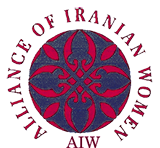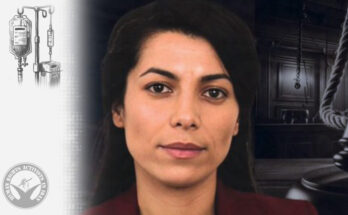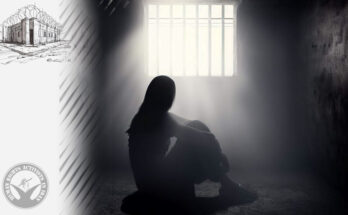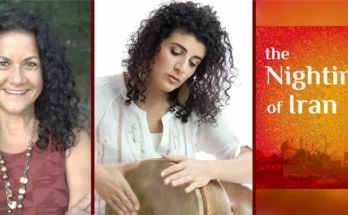Source: NPR
Two years after mass protests, women are still demonstrating against Iran’s mandatory hijab law and clerical rule. Iran’s government is saying the activists are in need of psychiatric help.
HOST:
In Iran, it’s been more than two years since mass protests broke out against the country’s mandatory hijab law and clerical rule. Many women are still walking on the streets without covering their hair. In an attempt to stop them, Iran’s government is turning to a new strategy—claiming the activists are in need of psychiatric help. Journalist Durrie Bouscaren has more.
DURRIE BOUSCAREN: It’s illegal for women and girls to uncover their hair on the streets of Tehran. But this young woman does it anyway.
UNIDENTIFIED PERSON: (Speaking Persian).
BOUSCAREN: She’s not alone, either.
UNIDENTIFIED PERSON: (Through interpreter) In more northern parts of Tehran, I can say that, among 10, you can see at least four women who are not wearing the hijab. In more central areas, I can say a minimum of 3 out of 10.
BOUSCAREN: NPR spoke to her on a video call and is withholding her name because the penalties for repeatedly not wearing the hijab or disobeying other dress code rules in Iran can range from fines and travel bans to having your car impounded or up to 10 years in prison.
UNIDENTIFIED PERSON: (Speaking Persian).
BOUSCAREN: She tells us that, in choosing not to wear a hijab, she has to either stay in areas where morality police are unlikely to be or prepare for the consequences. Her car has been impounded three times. The school where she works has threatened to fire her.
UNIDENTIFIED PERSON: (Through interpreter) I have to calculate with myself – is it necessary to go, and do I have the mental capacity to deal with whatever might happen? There are days when you feel ready and I think I can deal with it and fight your battle, and there are days that you cannot.
(SOUNDBITE OF ARCHIVED RECORDING)
UNIDENTIFIED GROUP: (Non-English language spoken).
BOUSCAREN: On November 2, bystanders filmed a 30-year-old student at Tehran’s Islamic Azad University who stripped down to a purple bra and underwear in the cold. Witnesses said she had been confronted by paramilitary forces for not covering her hair. According to the Iranian government, she was transferred to a psychiatric facility for almost three weeks and released to her family last Tuesday.
ANNIE: (Speaking Persian).
BOUSCAREN: This protester, who goes by the pen name Annie, says the case reverberated through the protester community, partly because the women she knows have imagined themselves doing the same.
ANNIE: (Through interpreter) When they walk on the streets and someone berates them, they have repeatedly imagined that, next time, I will take off all my clothes.
BOUSCAREN: They see the case as a clear act of defiance, not a mental health crisis.
CHOWRA MAKAREMI: It’s a movement against mandatory veiling as a state ideology.
BOUSCAREN: Chowra Makaremi, a Paris-based expert on Iranian social movements, says this image is powerful because the hijab has become a symbol of the state and its religious rule, not a personal expression of faith.
MAKAREMI: It’s a way of policing public space through the women’s bodies as a support of inscription of the law.
BOUSCAREN: Over the past weeks, the Iranian government has continued to insist, without evidence, that women who do not cover their hair are mentally unwell. They announced funding for a mental health clinic to treat women who do not wear the hijab, which the Iranian Psychological Association called a clear example of the abuse of psychology and psychiatry. Makaremi says this is an old playbook used to discredit activists.
MAKAREMI: It gives the ideas that unveiling is a kind of a dangerous behavior that you can be addicted to because it produces adrenaline. And also, you know, a kind of a clinic approach to addiction is, like, something very modern. It’s something very open-minded because what do you do to addicted people in Iran? You execute them. Don’t forget.
BOUSCAREN: Several public figures who posted images of themselves without a headscarf during the Woman, Life, Freedom movement in 2022 received court summons for weekly visits to mental health centers. And other high-profile activists, men included, have reported being subjected to injections, electric shocks and harsh treatment in psychiatric facilities.
AZAM JANGRAVI: Every person that do against mandatory hijab know it has lots of cost.
BOUSCAREN: Azam Jangravi was one of the first hijab protesters. In 2017, she stood on a utility box for 45 minutes with her head scarf dangling from a stick before she was arrested by police. She says authorities pressured her family to claim she was mentally ill to avoid prison.
JANGRAVI: They were very, very nervous. And he said, we want to protect you. What we should do? And I said no, please don’t do it. Please. I beg him.
BOUSCAREN: After a psychologist also refused to say she had a mental crisis, she was sentenced to prison. She was blocked from continuing her studies. She lost her car. She almost lost custody of her daughter, but was permitted to leave the country for Canada. She fears for the women who do not have that luxury.
For NPR News, I’m Durrie Bouscaren.





